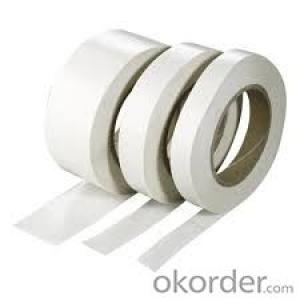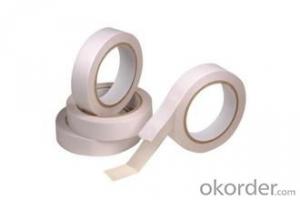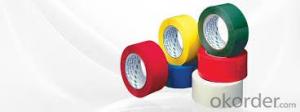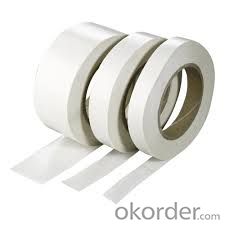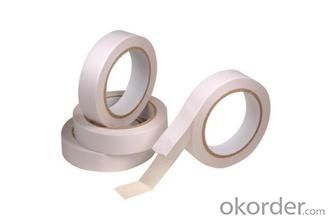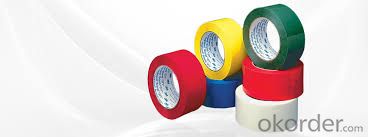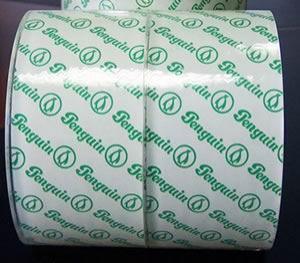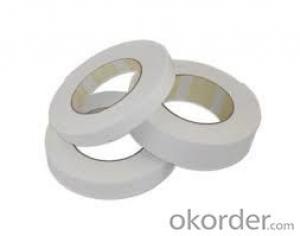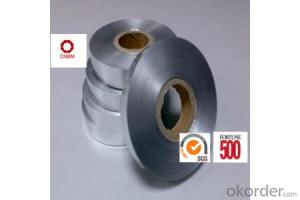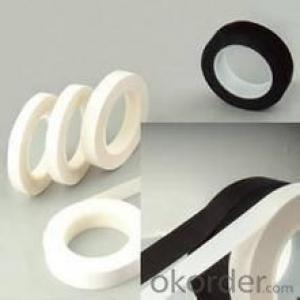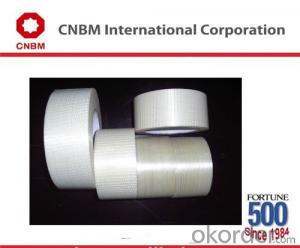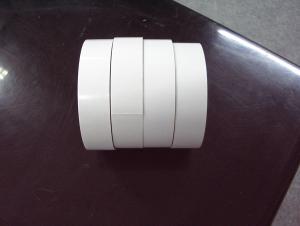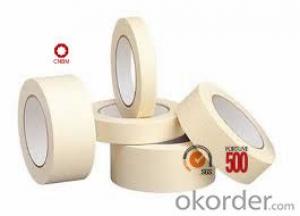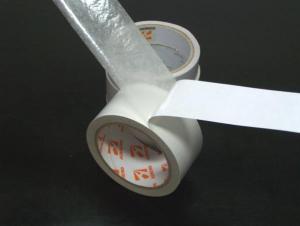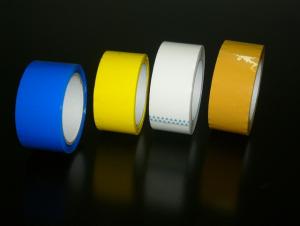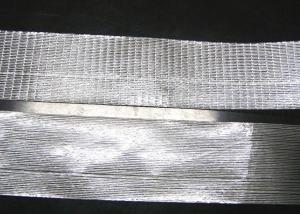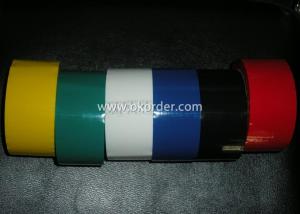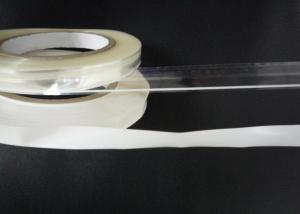Double Sided Tissue Tape 110 Micron SGS&ISO9001
- Loading Port:
- Shanghai
- Payment Terms:
- TT OR LC
- Min Order Qty:
- 10000 m²
- Supply Capability:
- 20000000 m²/month
OKorder Service Pledge
OKorder Financial Service
You Might Also Like
Structure of Double Sided Tissue Tape
Carrier:tissue
Adhesive:hot melt adhesive
water based acrylic
solvent based acrylic
Description
The Double Sided Tissue Tape is of tissue as the carrier, coating with hot melt adhesive, water based acrylic, solvent based acrylic. It is excellent in flame retardant, high temperature stability, and anti-aging. It provides well insulation to various products.
The thickness of the tape can be customized.
Main Features of the Double Sided Tissue Tape
| Item No. | Adhesive | Thickness (micron) | Initial Tack (14#mm) | Holding Power(hour) | Adhesive to steel (N/25mm) | Temperatureresistance (DC) |
| DS-110H | solvent based acrylic | 110 | 120 | 2h | 17 | 60 |
Specifications
·World Top 500 Enterprises
·Resistance to cold, heat and aging
·Best quality and competitive price
·SGS&ISO9001
Application
General purpose of Double Sided Tissue Tape: widely used for bonding, fixing for leather, foam, sponge, garment, shoe, luggage, plastic, paper splicing and stationery.
Packaging & Delivery
Packaging Detail:
Log Roll: Length 1000mm; width: 1050mm, 1260mm, 1040mm..
Cut Roll: As per customer’s requirements
Delivery Detail: within 7-15 working days after receiving your deposit
Service
Sample of Double Sided Tissue Tape is available.
Your inquiry will be replied within 12 hours.
24 hours service
Well-trained & experienced sales representative are ready to answer you.

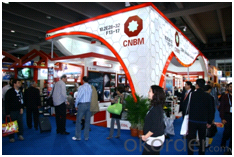
FAQ of Double Sided Tissue Tape
Q1. How about your company?
CNBM International Corporation (CNBM International) is a state-owned company and we have sound business relations with clients from over 120 countries. Currently, we have wholly-owned overseas subsidiaries and branches in 5 countries with a view to realize localization, which also represents an essential progress in our globalization target. We have over twenty years experiences.
Q2. How to guarantee the quality of the double sided tissue tape?
We have our own experts to check the quality of the products. Adhesive tapes have already passed SGS&ISO9001 Certificate and Customers Grade AA.
Q3. How long can you receive the product?
Commontly 7 to 10 working days can be received.
Welcome to contact us and visit the factory!
- Q: Can packaging tape be used for sealing poly mailers?
- Yes, packaging tape can be used for sealing poly mailers. Packaging tape is commonly used to seal a variety of packaging materials, including poly mailers. It provides a strong and secure seal that prevents the contents from falling out or being tampered with during transit. However, it is important to ensure that the tape is applied properly and securely to ensure the integrity of the seal. Additionally, it is recommended to use a high-quality packaging tape that is designed for secure sealing to ensure the best results.
- Q: What's the name of the sealing tape specification 40*50y y?
- Yard English words, yards. 1 yards =0.9144 metersThe length is not 50m, but 50 yards, about 45.72 meters. Not only 50 meters.
- Q: Can packaging tape be used for sealing paper bags?
- Yes, packaging tape can be used for sealing paper bags. Packaging tape is designed to have strong adhesive properties that bond well with various surfaces, including paper. When applied properly, packaging tape can provide a secure and reliable seal for paper bags, keeping the contents inside protected and preventing them from falling out or being exposed to external elements. It is important to ensure that the surface of the paper bag is clean and dry before applying the tape for optimal adhesion.
- Q: Can packaging tape be used for sealing packages with medical or pharmaceutical products?
- Indeed, packaging tape can certainly serve as a means to seal packages containing medical or pharmaceutical items. Nonetheless, it is crucial to take into account the precise requirements and regulations pertaining to packaging within the medical and pharmaceutical sectors. Such industries often uphold rigorous standards concerning packaging materials, aiming to guarantee the safety, soundness, and adherence to regulatory guidelines of the products. Consequently, it is advisable to opt for packaging tape specifically formulated and authorized for use in medical or pharmaceutical contexts. These tapes are typically composed of moisture-resistant and tamper-proof materials, ensuring a robust seal to safeguard the package's contents. By utilizing approved packaging tape, the quality and integrity of medical or pharmaceutical products can be preserved throughout storage and transportation.
- Q: How do you store unused rolls of packaging tape?
- In order to preserve the adhesive properties of unused rolls of packaging tape, it is crucial to store them in a cool and dry location. One possible option is to utilize a plastic storage bin or container equipped with a lid, as this will shield the tape from both moisture and dust. Another alternative is to employ a dedicated tape dispenser or a tape gun with a built-in storage compartment for extra rolls. This not only keeps the tape well-organized, but also prevents it from unraveling and becoming entangled. Remember to keep the rolls in an upright position to prevent any potential damage or deformation. By correctly storing unused rolls of packaging tape, you can guarantee that they will remain in optimal condition and readily available for use when necessary.
- Q: Does packaging tape come in different widths for different applications?
- Yes, packaging tape does come in different widths to cater to various applications.
- Q: Is packaging tape waterproof?
- Typically, packaging tape possesses waterproof properties. Its design aims to resist moisture effectively and create a formidable seal, thereby preventing water infiltration into the package. Nonetheless, it is crucial to acknowledge that the degree of waterproofing can vary depending on the quality and type of packaging tape employed. Certain tapes may offer a more reliable seal compared to others, hence it is advisable to opt for a tape explicitly crafted for packaging and sealing applications.
- Q: I want to be involved in the tape industry, is the parent type their split, but do not know the parent roll cut in segmentation machine is good, or even after the parent roll processing, and also is the problem of the equipment, how much money, thank you
- Buy mother volume back, after four machines processed into finished products can be, the equipment price is: 40 thousand, -4.3 million.
- Q: Can packaging tape be used for sealing plastic or poly bags?
- Certainly! Packaging tape is capable of sealing plastic or poly bags. Its design is focused on creating a strong and secure seal on different surfaces, such as plastic and poly bags. By utilizing an adhesive backing, the tape effectively sticks to the plastic material, guaranteeing a tightly sealed bag. Nevertheless, it is crucial to consider that there are various types of packaging tape accessible. To achieve optimal performance and a durable seal, it is advisable to select a tape that is explicitly designed for sealing plastic or poly bags.
- Q: Can packaging tape be used for sealing packages with medical or pharmaceutical products?
- Yes, packaging tape can be used for sealing packages with medical or pharmaceutical products. However, it is important to consider the specific requirements and regulations for packaging in the medical and pharmaceutical industries. These industries often have stringent standards for packaging materials to ensure product safety, integrity, and compliance with regulatory guidelines. Therefore, it is recommended to use packaging tape that is specifically designed and approved for medical or pharmaceutical applications. These tapes are typically made from materials that are resistant to moisture, tampering, and provide a strong seal to protect the contents of the package. Using approved packaging tape helps to maintain the quality and integrity of medical or pharmaceutical products during storage and transportation.
Send your message to us
Double Sided Tissue Tape 110 Micron SGS&ISO9001
- Loading Port:
- Shanghai
- Payment Terms:
- TT OR LC
- Min Order Qty:
- 10000 m²
- Supply Capability:
- 20000000 m²/month
OKorder Service Pledge
OKorder Financial Service
Similar products
Hot products
Hot Searches
